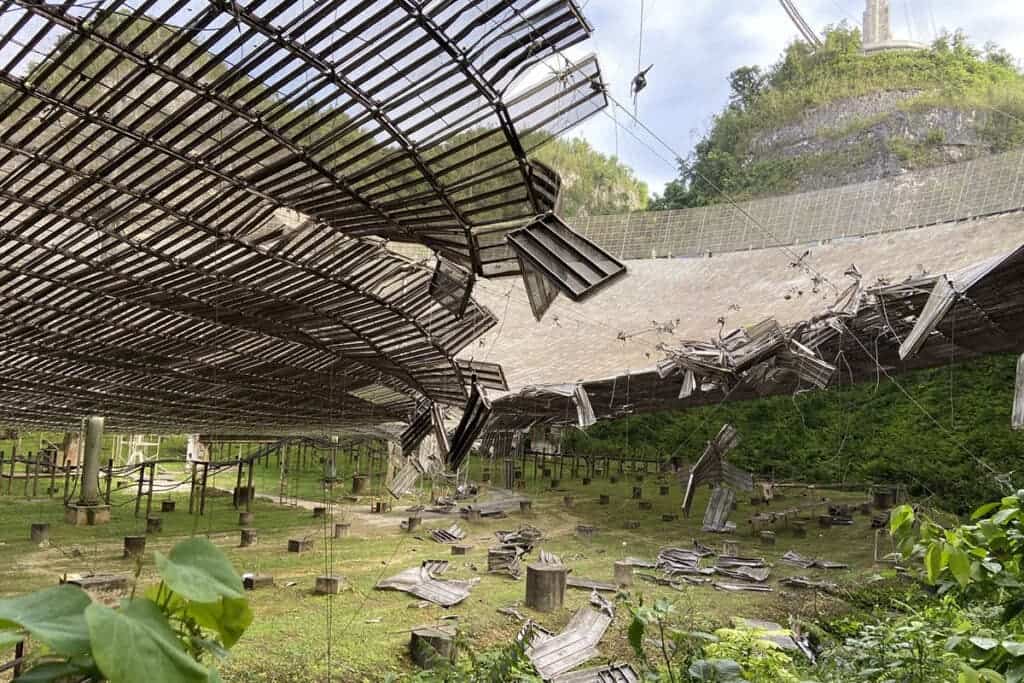The Arecibo Observatory in Puerto Rico, one of the largest radio telescopes in the world, was severely damaged during a tropical storm, with problems starting from a broken cable.
This is just the latest in a string of recent misfortune that the telescope suffered in recent years.

One of the auxiliary cables that helps support a metal platform in place above the observatory broke on August 10, triggering a 100-foot-long gash on the telescope’s reflector dish. The damage happened during the Tropical Storm Isaias, but it isn’t clear yet just how the damage occurred.
“We have a team of experts assessing the situation,” said Francisco Cordova, the director of the observatory, in a statement. “Our focus is assuring the safety of our staff, protecting the facilities and equipment, and restoring the facility to full operations as soon as possible.”
The break occurred early in the morning when the storm was kicking in, according to Cordova. When the three-inch cable fell it also damaged about six to eight panels in the Gregorian Dome and twisted the platform used to access the dome. The observatory is now closed pending an investigation.
The observatory is managed by the University of Central Florida and it began operating in 1963. Over the years, it has produced many scientific discoveries in the solar system and beyond, being considered one of the most powerful telescopes in the world at the time. It’s also where SETI, the search of extraterrestrial intelligence, began. Nowadays, Arecibo is used by scientists around the world to conduct research in the areas of atmospheric sciences, planetary sciences, radio astronomy and radar astronomy. It is also home to a team that runs the Planetary Radar Project supported by NASA’s Near-Earth Object Observations Program.
While the damage was shocking to everyone, it’s far from the first time that Arecibo had to deal with technical difficulties. Back in September 2017, Puerto Rico was severely hit by Hurricane Maria, which knocked power across the island for months. An antenna suspended over the observatory fell and punctured a dish. The hurricane came at a difficult time for the observatory. The National Science Foundation, which owns Arecibo, was already considering giving the observatory to someone else so it could focus on other projects. The foundation finally did an agreement with a group of three institutions to take over the operations.
Then, earthquakes hit the island in January of this year. The tremors were as strong as 6.4 magnitudes and it made it impossible to carry out observations, with no visitors allowed on-site. The dish wasn’t damaged but operations couldn’t be restarted until the tremors fully stopped.


